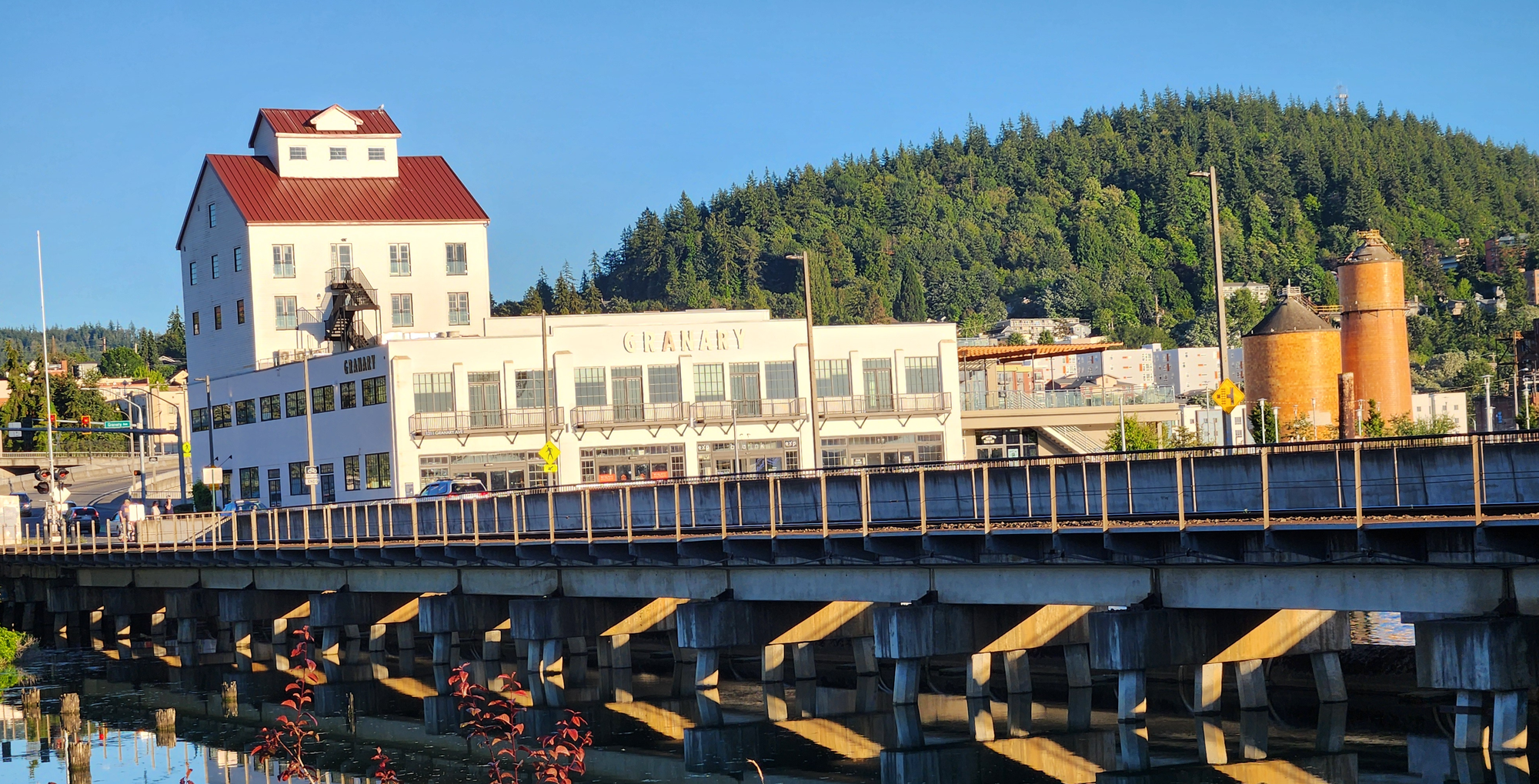WTA Proposing Interim Bus Service to Bellingham’s Waterfront
While initial service on 2 new routes would be limited, it would be an incremental step toward potentially “more robust and likely expanded service” in 2025.

The Whatcom Transit Authority Board of Directors is set to host a public hearing on August 15 to discuss plans to implement interim bus service to Bellingham’s Waterfront District and Squalicum Harbor, two areas of the city that currently lack transit service.
The WTA public hearing notice indicates that the agency, which has wanted to add bus service to the waterfront for many years, received a request to introduce service “sooner rather than later,” especially to connect a recently opened multi-family apartment building and daycare center in the Waterfront District with transit. The introduction of waterfront bus service was identified in WTA’s 2024-2029 Transit Development Plan, as BhamByBus examined on July 30.
WTA’s proposal for interim waterfront bus service envisions two routes – Route 46 (Granary) and Route 47 (Harbor) – both with limited service seven days a week. Without laying out all the details of the proposed schedules, there would be hourly service on both routes in the morning and afternoon, but not midday and evenings.
“The bus service we are proposing is not perfect and may not be ideal for everyone, but it is what we are able to provide right now, with our current buses and transit operators,” according to WTA’s public hearing notice FAQ. The interim service could lead to a future proposal for “more robust and likely expanded service” in 2025.
Operationally, Routes 46 and 47 would be part of the same service operating out of Bellingham Station, where one bus operating as Route 46 would run to the Millworks building in the Waterfront District via N. State Street, E. Maple Street, Cornwall Avenue and W. Laurel Street and return to Bellingham Station via Granary Avenue, W. Chestnut Street, E. Chestnut Street, and N. Forest Street. That bus would then become Route 47 and follow the same route to the Waterfront District before turning west toward Squalicum Harbor via Roeder Avenue and Coho Way.
When Routes 46 and 47 would be in service, they’d provide combined service of two buses per hour in the corridor between Bellingham Station and Millworks, a multi-family apartment building operated by Mercy Housing Northwest with one, two and three bedroom apartment homes families under 50% and 60% of area median income. The building opened this spring at W. Laurel Street & Cornwall Avenue as part of larger redevelopment plans for the former Georgia-Pacific site on the waterfront. Phase 1 of the Millworks development was funded through public and private funds, including the City of Bellingham’s Home Fund, the Washington State Housing Trust Fund, federal low-income housing tax credits, PeaceHealth, the Norcliffe Foundation, Mount Baker Foundation, and the Whatcom Community Foundation.
The introduction of waterfront bus service, despite its limited number of bus trips per day, would be good for two reasons:
- New bus service would help people, including Millworks residents, ascend and descend the hill between the Waterfront District and Downtown Bellingham. (Bellingham Station, a major local and regional bus hub, is approximately 60 feet higher than the Waterfront District.) The bus trip from Millworks to Bellingham Station would take about 10 minutes.
- Introducing bus service could help tourists and locals access waterfront destinations, like Kulshan Brewing Co.’s Trackside Beer Garden, Waypoint Park, Marine Life Center, Squalicum Harbor, Zuanich Point Park, and the Dockside Fish Market. (Currently the fish market’s fresh local seafood is frustratingly out of easy reach without a personal vehicle or bicycle). With enough promotion and community partnerships, waterfront bus service could be a major boon for both locals looking for car-free options for reaching the waterfront and visitors looking to enjoy some of Bellingham’s most popular waterside destinations.
As this plan develops, BhamByBus will be watching for more information about bus stop locations, which, besides Bellingham Station, Millworks, and Squalicum Harbor, aren’t detailed in WTA's public hearing notice.
- The proposed Route 47 would connect Squalicum Harbor via Roeder Avenue, which parallels the BNSF railroad tracks that present some challenges for siting bus stops on the north side of Roeder. While the south side of Roeder has a sidewalk, there’s no sidewalk and not much room across the street for westbound bus stops given the immediate proximity to active rail tracks.
- Hopefully, WTA, the City of Bellingham, and BNSF can work together to find a creative long-term solution to siting bus stops in the vicinity of Roeder Avenue & F Street, one of only two crossings of the rail tracks between Whatcom Creek and Squalicum Creek. It would be unfortunate if those coming from Old Town or the Lettered Streets couldn’t access Route 47 buses to Squalicum Harbor along Roeder Avenue due to a lack of stops. Similarly, it’d be a bummer if buses would pass Ponderosa Books & Beer and Hotel Bellwether without stopping on their way to Squalicum Harbor.
But let’s see what takes shape. The interim service WTA has proposed is an incremental step toward better transit access that's been envisioned. And that’s very promising.
- Have local and regional transit and transportation news to share? Email BhamByBus.
- Follow BhamByBus on Instagram.
